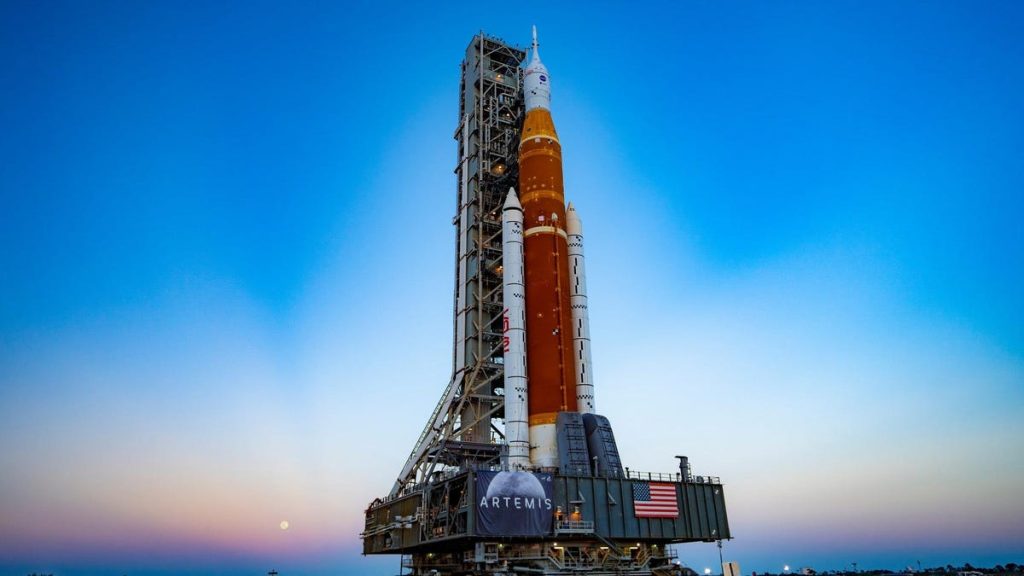Artemis 1, NASA's Return to the Moon, Launches on Monday

Photo: NASA
NASA is kicking off its manned return to the Moon on August 29, after almost 50 years since the last Apollo mission. The Artemis 1 is set to launch on Monday at 8:33 a.m. EDT from the Kennedy Space Center in Cape Canaveral, Florida, as the first in a series of missions to kick off NASA’s deep space exploration, and by extension, that of humanity. We made it, everyone. Deep space.
Well, not quite. At least not yet, and the success of later Artemis missions is riding on the megarocket set to launch next week. The Artemis 1 will be the first flight test of NASA’s Space Launch System and Orion Spacecraft. The test flight will be uncrewed for now, as the U.S. agency puts its megarocket and craft through their paces.
Even though Artemis 1 won’t be taking any astronauts to the Moon on Monday, it’s a landmark launch for other reasons. NASA says that the Artemis 1 will travel 280,000 miles away from Earth, which is further into space than any previous spacecraft made for humans. At its furthest point, the Orion spacecraft will be about 1,000 times further from Earth than the ISS.
Photo: NASA
You can see, then, why this first mission and test flight would be uncrewed. That’s just a hell of a long way to be from any help or recourse this early into the Artemis missions. That’s not to say we won’t eventually have to cut the tether of the relatively small distance we’ve traveled into space thus far, but deep space exploration is something mapped out over decades — maybe centuries.
G/O Media may get a commission
12% Off
Sony LinkBuds Truly Wireless Earbuds
Link up
The Sony LinkBuds Truly Wireless Earbuds are incredibly small and light, making them super comfortable, have a batter life of up to 5.5 hours with an addition 12 hours thanks to the charging case, they’re IPX4 splash-proof and sweat-proof, can be controlled via touch, and use a special design to allow you to hear other sounds when you need to.
But it’s baby steps for now. Artemis 1 will be in space for just about four to six weeks. Throughout the course of its mission the SLS and, later, the Orion spacecraft will have traveled over 1.3 million miles to return to Earth for its final trial, reentry.
That distance isn’t a straight shot away, of course. That’s accounting for the distance the Artemis 1 will travel in orbit around the Earth and Moon as it loops around space on its journey. Just to put that 1.3 millions miles into perspective, the closest recorded distance between Earth and Mars is over 35 million miles.
NASA says the Artemis missions are the first step to interplanetary travel, and getting to Mars is one of the objectives slated for subsequent missions set for the long-term. The follow-up mission Artemis II will have astronauts traveling aboard, although not for lunar exploration. That comes later, as NASA prepares to land the first woman on the Moon on later Artemis missions.
Photo: NASA




